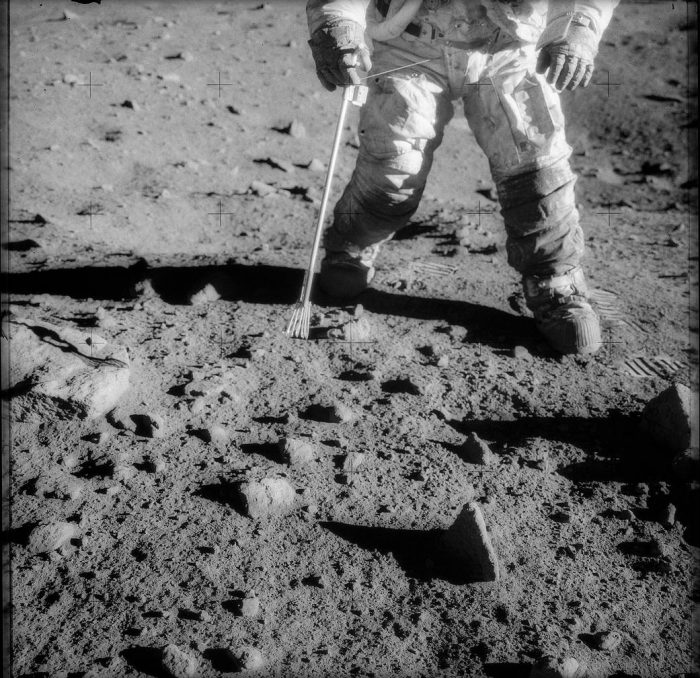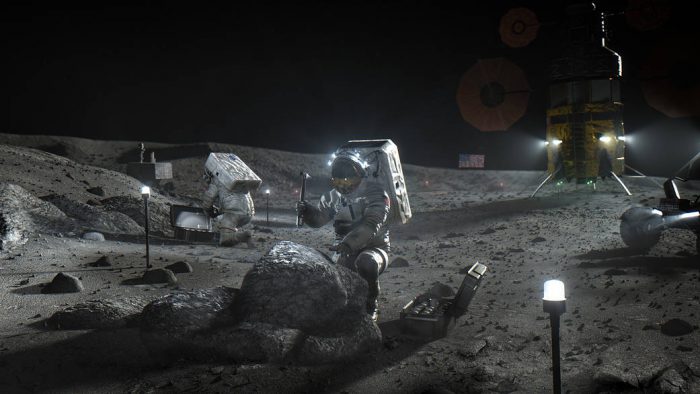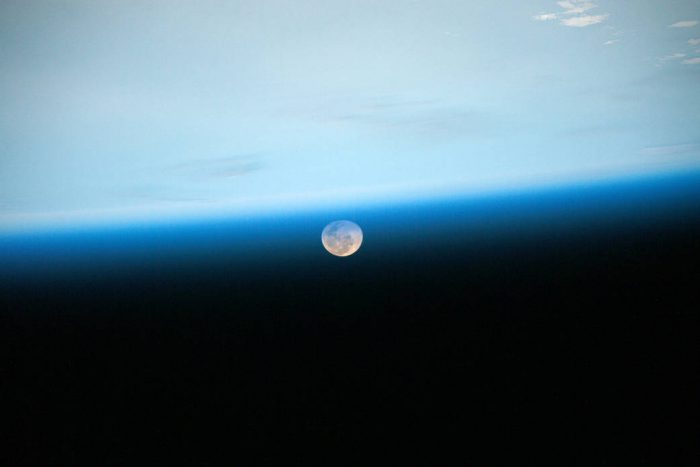Two studies released last week have confirmed a suspicion that scientists have held for a long time.
There is water on the Moon.
Our Moon. Floating around in our night sky. Who would've believed it?
The observations were made by a pair of spacecraft observatories. They are (get ready because they are a mouthful!) NASA's Stratospheric Observatory for Infrared Astronomy (a.k.a. SOFIA) and the Faint Object infraRed Camera for the SOFIA Telescope (FORCAST). Together, SOFIA and FORCAST were able to detect water molecules on the sunlit surface of the Moon near the south pole.
But before all of you astronauts start packing your rain boots to splash in some Moon puddles, we need to tell you something about this water.
Lunar water molecules

Is there really water in that dust? Apparently so! (NASA)
The water on the Moon is not liquid. With no atmosphere to either filter out or keep in the Sun's energy, the temperature on the Moon varies from being as cold as -163°C and as hot as 127°C. Meaning that water would either boil and float away or stay frozen as ice.
Most of this water is frozen, sealed in hidden, shadowed areas known as cold traps. But the water that is on the surface isn't ice. Nor is it a gas (if it ever became a gas, it would just float away from the Moon forever). Instead, it is in the form of water molecules encased within microscopic dust and glass. Essentially, these molecules are so spread out and sealed within these particles that they never interact with each other to either freeze or evaporate.
This is why these molecules can stay on the surface in direct sunlight at temperatures well above the boiling point of water. Amazing!
Let the questions begin!

This illustration shows what a future mission to the Moon might look like as a part of the Artemis program. (NASA)
There are many theories about the future Artemis missions to the Moon that involve the possibility of mining Moon water for astronauts to use.
It's pretty exciting! Though how much ice there is and how easy it will be to access is another matter. Humans aren't living off of a handful of random water molecules dusted across the surface. But the frozen deposits of buried water ice hold a lot more possibilities. It all depends on how much is up there.
Another question is how did the water get there?
More research is needed to know for sure. The leading theory is that it was carried there by asteroids and comets that collided with the Moon, but there are other possibilities—it could have even been brought to the surface as a part of ancient volcanic eruptions. (Wow!)
Let the mind-blowing Moon explorations continue!
 The Moon's newest secret is a doozy! (NASA)
The Moon's newest secret is a doozy! (NASA)










Woah 😯